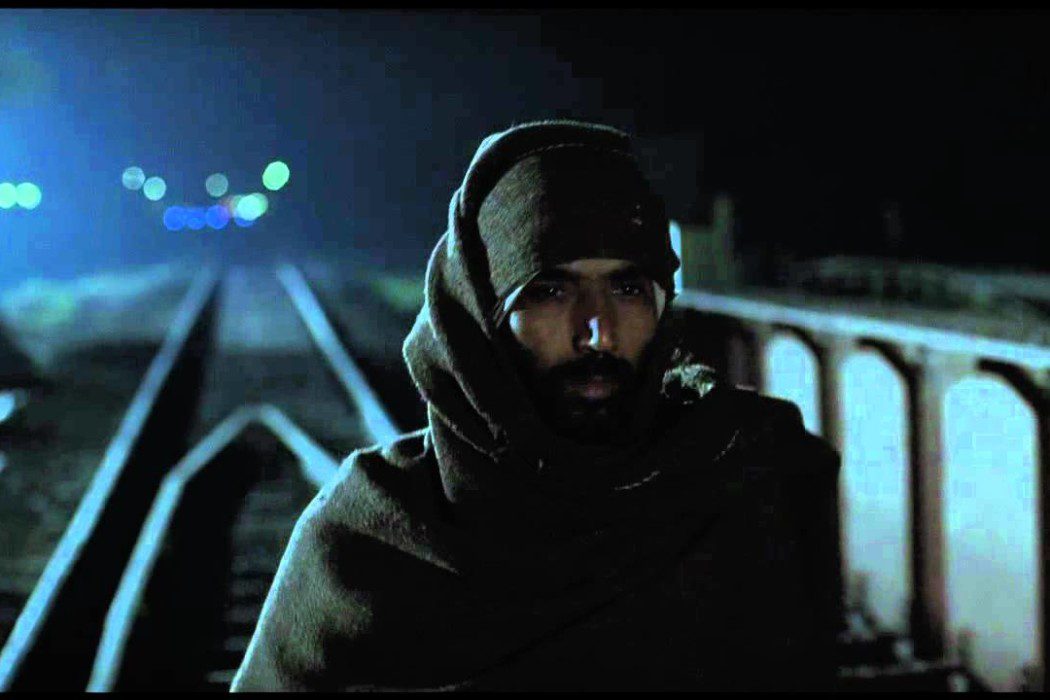30th anniversary of Sarveshwar Dayal Saxena’s classic Khutiya par tange lok.
Books are everywhere in January. Between bookfests of little or no significance to the idea of the book as a lived experience, between the recent memory of Sunando Sen being thrown in a New York subway station, Bishwajit Das throttled on the streets of Dhaka and the regular news (having little effect on us) that many are dead on the streets after a cold wave that swept through north India, I was wondering which book shall be the first one that I will begin the year with.
On my way to Kumbh Mela from the Varanasi airport, I dropped by an old book haunt in Assi Ghat and picked up a second-hand copy of a book, I had read a decade back. First edition of Sahitya Academy publication of Sarveshwar Dayal Saxena’s classic Khutiya par tange lok in English translation by Vijay Munshi.
And then the drive to Kumbh was to savour the lines of a man, who straddled between prayogvaad and nayi kavita and in a sense outgrew both movements. Here is a man who was part of a literary churning of Varanasi and Allahabad that gave us some of the finest voices like Bhartendu Harishchandra and now in the philosophical writings of Gautam Chatterjee.
A decade back, these words were great poetry. A decade later, as I read the book it was a sniper attack.
Hit by a bullet
One said, “Ram”
The other, “Mao”
The third
Instead, “Potato”
The post-mortem report says
The first two had bellies full
The poem is mocking our so-called informed consciousness. Taking us on a journey through critical topographies. Across shared pain and maps of different countries drawn on X-ray sheets of internal dislocation. Across a collage of empty frames.
Across crafted paranoia, stifling hunger and the suspicious definition of the word ‘suspect’.
Look at Vidarbha. Three more Vidarbha farmers (Gajanan Thorat from Mahasal village in Karanja tehsil of Wasim district, Kamlabai Chavan and Gajanan Ghotekar from Kelapur tehsil in Yavatmal) have committed suicide on April 20, 2012, joining the long list of those who took their lives because of faulty policy on cotton. Reason: much publicised relief aid to the tune of Rs 2,000crore to the farmers as announced in December 2011, has not reached the families. Immediate reason: On March 4, 2012, the central government imposed a blank ban on cotton exports; as a result, there is a drastic fall of price per quintal. Implications: More than seven million farmers across Maharashtra, Gujarat, Rajasthan, Punjab, Andhra Pradesh and Madhya Pradesh cultivating over 12 million hectares have been plunged into a deep crisis resulting from increased production costs and a whimsical support price mechanism. The exile producing factory turns a blind eye. Suicides don’t matter. They reduce population. Don’t they?
These pains leap. From one pin code to another. From one line of control to different lines of control.
Like Ghisu in Premchand’s Kafan. Like Toba Tek Singh coming out of Manto’s pen. Like all of Saxena’s creatures that hang on pegs.
For you, clothed to see the others with clothes on,
For you clothed to see the others unclothed
For you unclothed to see the other without clothes
Are three distinct relationships
You amuse yourself with the first, look for the second
And you unite with the third to raise the flag of
Revolution and a new world
In these times of bargaining and negotiating justice… where is the proverbial Gandhari? Died in the forest fire, yet she stays in our consciousness. Chuckling away at the burnt toe of Yudhishtira. Knowing fully well that she did wish the destruction of the Yadavas. Turning blind after realising her husband was blind. Hearing about the death of a hundred sons. One by one. In installments.
Saxena cajoles that mythical Gandhari out of her stupor. He is comparing mental notes between her state of blindness and the institutionalised blindness that is so rampant now. Or understanding, the newer pedagogy of the making of line of control. And some nuggets about people who breach it.
Saxena’s Gandhari, thus, has to confront the dilemmas of revolution and the new world.
Some of the other poems leap out of the pages. And becomes here and now.
She washed her face
in the waterfall
She ate the fruit
of the tree
She slept on the grass
Now, all three wonder
who she belongs to
We are pretending to be in this world of ideological antagonism and complexities. But aren’t we overtly simplistic as well? Simplistic to the point of being brutal and banal at the same time? We revel in creating notions of exile. Be it personal or political. That is why we want to own her.
Which brings us to the next question. How can art be a reflection of this? How can art capture the banter along with the conversation? Employ new tools to understand that the kinetic sculpture and the skype, the documentary and the installed object, the lithograph and the woodcut, the tempera and the video screen… all these form a new fragmented discourse. Or craft your new poems in a new shape, the way Saxena shapes his words.
Despite, the bumkum of calling oneself democratic, there’s a very top-to-bottom hegemonic approach and a Stalinist leaning into looking at art. Make people toe the line, pick out radical adversaries, snuff out the pockets of defiance and ensure that the group of dissenters, who have spent so many years in the field fighting pitched ideological battles are disowned and have nowhere to go.
Please remember there is no category in history called retired liberal or retired revolutionary. Yes, the pace slows down, but the mind moves at a frenetic pace. When the body gets tired of necessary bohemianism, the mind churns out patterns that emerge from years of being khanabadosh. It is important to nurse and preserve these patterns in our ever-growing, ever-expanding idea of a worldview. This worldview is informed and enriched by compassion but is not a central fixated idea.
The absence of a constantly evolving and a dynamic worldview is creating a sense of exile. We are now at a T-junction of history where all roads lead to exile. Some exiles we walk into, some we are co-opted into and some we are shoved into. And then the unkindest cut of them all, declare the person irrelevant.
Saxena’s poems attack these notions of irrelevance and questions the texture of sovereignty. His pen knows that the mental state of asphyxiation is a little more troublesome than the dysfunctional heartbeat.
Let me end with a poser.
How would you know that the avowedly apolitical is nothing but a tactical and escapist ploy to avoid confrontation with the mass political stance? In many ways, the immediate one that I would like to recommend is flip the cart and pick up Sarveshwar Dayal Saxena’s book. These lines shall demonstrate (in a deft mix of both the nuanced and crude) how words become poetry, pamphlet and manifesto at the same time without getting didactic.
Get the book. And then dip into two of his other writings, (if you have not already encountered them) Hawalat(play) and Bakri (short story). And you have a searing triptych on loss.
Read on.


